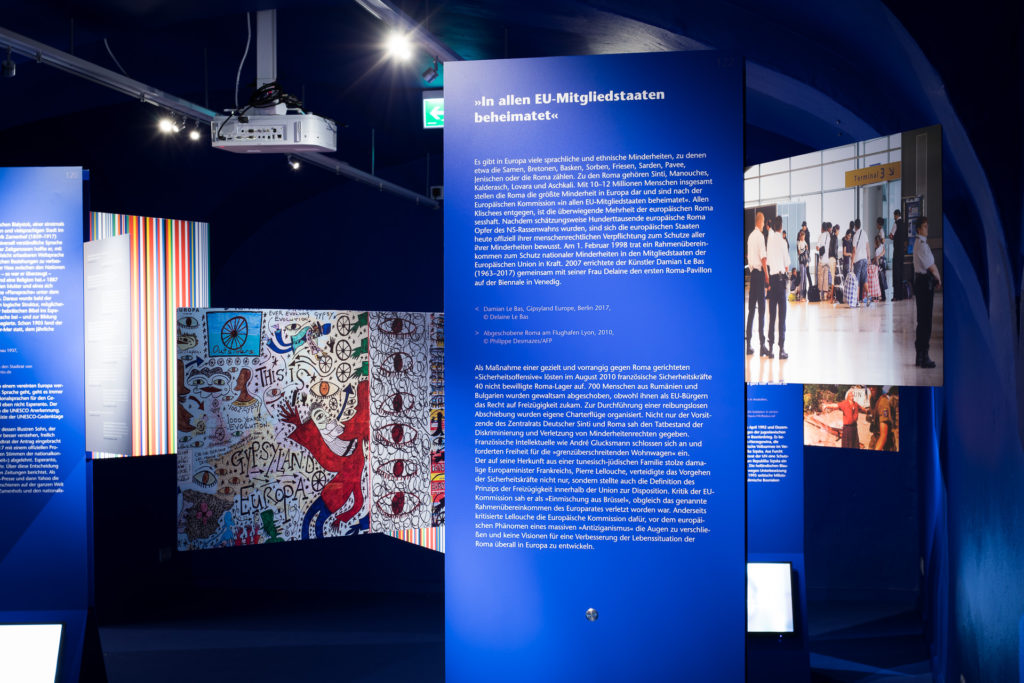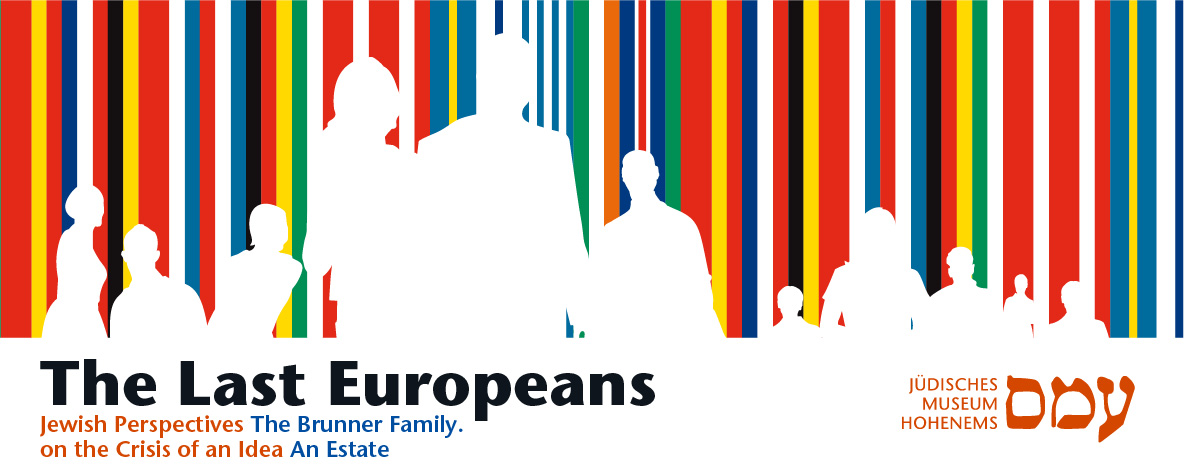
Installation “Domiciled in all EU Member States”. Photo: Dietmar Walser
There are numerous linguistic and ethnic minorities in Europe, among them, for instance, the Sámi, Bretons, Basques, Sorbs, Frisians, Sards, Pavees, Yenish, or the Roma. Also counting as part of the Roma are the Sinti, Manouches, Kalderash, Lovari, and Ashkali. With a total of 10-12 million people, the Roma constitute Europe’s largest minority and are, according to the European Commission, “domiciled in all EU member states.” Contrary to common stereotypes, the overwhelming majority of European Roma are settled. After roughly hundreds of thousands of Roma have fallen victim to National Socialist racial fanaticism, the European states are now officially aware of their human rights obligations to protect all their minorities. On February 1, 1998, a Framework Convention for the Protection of National Minorities entered into force in the member states of the European Union. In 2007, the artist Damian Le Bas (1963–2017) built together with his wife, Delaine, the first Roma pavilion at the Venice Biennale. < Damian Le Bas, Gypsyland Europe, Berlin 2017, © Delaine Le Bas > Deported Roma at Lyon Airport, 2010, © Philippe Desmazes/AFP In August 2010, as part of a “security crackdown” targeted and primarily directed at the Roma, French security forces dismantled forty illegal Roma camps. Seven hundred people from Romania and Bulgaria were forcefully deported although as EU citizens, they enjoy the right to freedom of movement. To enable frictionless deportations, special charter flights were organized. Not only the chairman of the Central Council of German Sinti and Roma saw in this an act of discrimination and violation of minority rights. French intellectuals such as André Glucksmann joined and demanded freedom for the “border-crossing mobile homes.” The Minister of State for European Affairs of France at the time, Pierre Lellouche, who is proud of his Tunisian-Jewish origins, not only defended the actions taken by the security forces, but also put up for negotiation the definition of the freedom-of-movement principle within the Union. He viewed criticism coming from the EU Commission as “interference from Brussels” although the mentioned Framework Convention of the European Council had been violated. On the other hand, Lellouche criticized the European Commission for shutting the eyes to the European phenomenon of a massive “antiziganism” and for not developing visions for an improvement of the life situation of the Roma everywhere in Europe.
